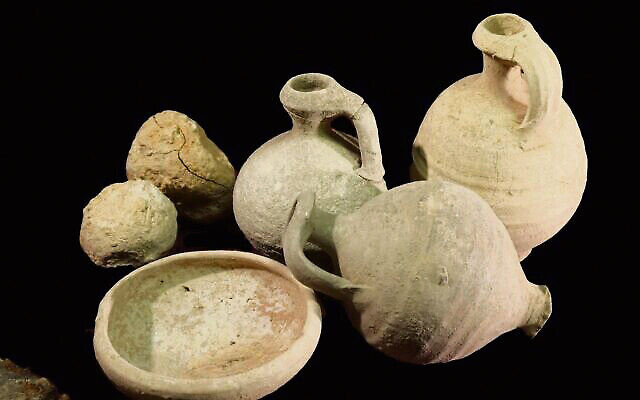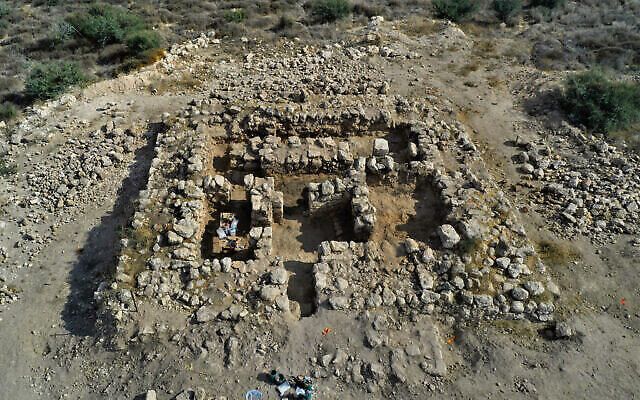‘Tangible evidence’ of the Chanukah story
“The excavation site provides tangible evidence of the Chanukah stories. It appears that we have discovered a building that was part of a fortified line erected by the Hellenistic army commanders to protect the large Hellenistic city of Maresha from a Hasmonean offensive."
Weapons, burnt wooden beams, dozens of coins and a Hellenistic fortified structure have been unearthed at an archaeological dig in a central Israel forest in what the Israel Antiquities Authority (IAA) says was evidence of a battle between the Hasmoneans and Greek Seleucids some 2100 years ago.
The discovery in the Lachish Forest was announced on Tuesday by the IAA to coincide with the upcoming Chanukah festival.
“The excavation site provides tangible evidence of the Chanukah stories. It appears that we have discovered a building that was part of a fortified line erected by the Hellenistic army commanders to protect the large Hellenistic city of Maresha from a Hasmonean offensive,” said the excavation directors in a statement.
“However, the finds from the site show that the Seleucid defences were unsuccessful; the excavated building was badly burnt and devastated by the Hasmoneans,” they added.
In a statement, the IAA said the excavations had uncovered a 15-by-15-metre building that had been designed as a well-fortified unit in around 112 BCE.
The walls were over three metres thick and built with large stones arranged in a slope on the outer side, to prevent them being scaled.
Inside, there were seven rooms and a stairwell leading to a second floor, which was not preserved. The archaeologists estimated that the building would have stood at around five metres high.
Thousands of large stones from the destroyed upper part of the building were removed during the excavations, before what was described as a “massive destruction layer”, about half a metre thick, was discovered.
That layer was made up of hundreds of finds, the archaeologists said, including pottery, slingshots, iron weapons, burnt wooden beams and dozens of coins dated to the late second century BCE.

“Based on the finds and coins, the building’s destruction can be attributed to the Hasmonean leader John Hyrcanus’s conquest of the region of Idumea in around 112 BCE,” the archaeologists said.
John Hyrcanus’s conquests, described in the Books of the Maccabees and the accounts of the historian Josephus, led to the southward expansion of the Hasmonean state.
“The stories of the Maccabees are coming to life before our eyes, and this is the most fascinating part of the Israel Antiquities Authority’s work, when dedicated, hardworking archaeologists breathe life into the historical annals of the people who passed through this land,” said IAA director Eli Eskozido.
“In a few days, we will be celebrating Chanukah, whose central theme is the Hasmoneans’ defeat of the Hellenists, leading to the establishment of the first independent sovereign Jewish entity.”
The site was on the summit of a hill that gave a view of the ancient main road, which ran along the Nahal Lachish streambed and would have served as an artery connecting the central area to the coastal plain.
In addition, the building overlooked Maresha, today a recognised UNESCO World Heritage Site, which was once a culturally diverse Hellenistic city with a small Jewish population in the district of Idumea.
Culture and Sports Minister Chili Tropper welcomed the find. “The Israel Antiquities Authority’s fascinating new discovery is a classic example of how traditional, well-known and well-loved stories become part of the historical and archaeological record,” he said.
TIMES OF ISRAEL


comments